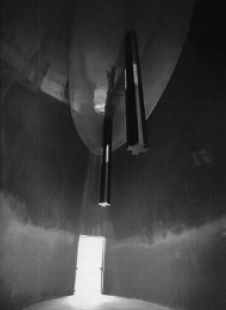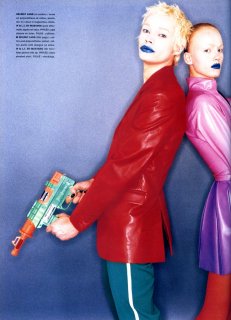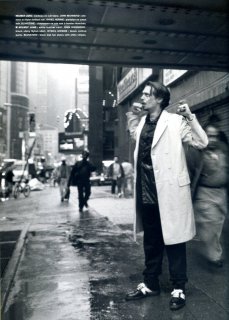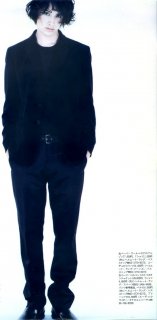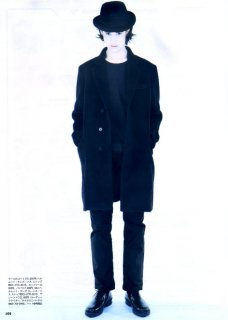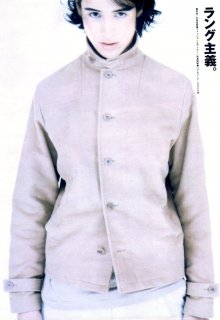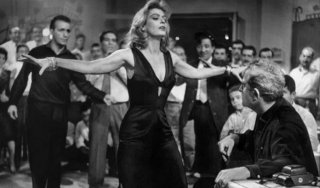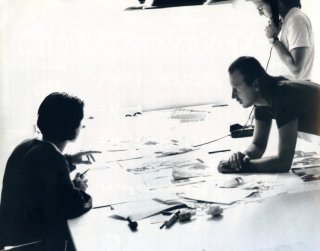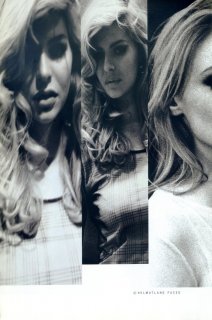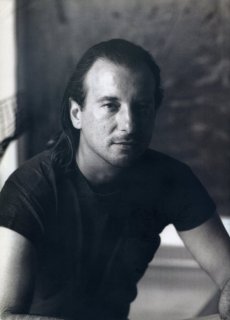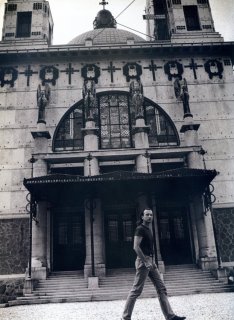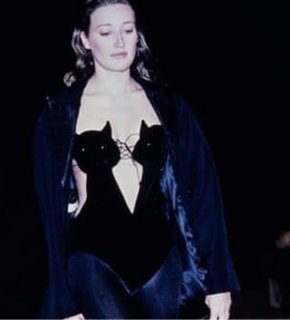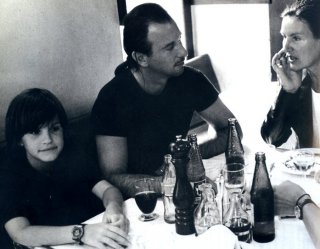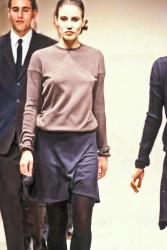runner
.
- Joined
- Feb 26, 2004
- Messages
- 12,912
- Reaction score
- 1,582
^ you're welcome softgrey
from the catalogue for the exhibition, Not in Fashion: Fashion and Photography in the 90s
"I wasn't going to force them to recreate a fashion show from the 90’s, or hang Helmut Lang's reflective trousers in the exhibition space. The garments would be completely reduced to artifacts or craft items. My challenge was to find a format that didn’t bring clothes into the space. Fashion is about the moment and how can you remove them from their context and reality. " - Sophie von Olfers, the curator
helmutlangstudio.com
from the catalogue for the exhibition, Not in Fashion: Fashion and Photography in the 90s
"I wasn't going to force them to recreate a fashion show from the 90’s, or hang Helmut Lang's reflective trousers in the exhibition space. The garments would be completely reduced to artifacts or craft items. My challenge was to find a format that didn’t bring clothes into the space. Fashion is about the moment and how can you remove them from their context and reality. " - Sophie von Olfers, the curator
WE WERE NOT CONCERENED WITH MASS APPROVAL
Sophie von Olfers in Conversation with Helmut Lang
Sophie von Olfers: Helmut, I think we should do this backwards, starting
from when you decided to make sculpture quite recently until the early
years of designing and making clothes. Was there a specific moment, a
date, an occasion that made you sell your label and start making art? Is
fashion
a field that makes people want to “walk away” eventually? It seems to
happen less in the art world, as far as I know.
Helmut Lang: It was more of a premonition of a changing world. My instinct
was to contribute on a different level and within a different set of
circumstances. Fashion is extremely complex in its requirements and if
these requirements change substantially, one possibility is to be brave
enough to question the expected and reevaluate personal needs. I don’t
think many people walk away
from fashion – it is very addictive.
SvO: But don’t you think people are very careful about adopting definite
positions for themselves? At least, this was my impression during the
preparations for this project – a lot of people have stopped associating
themselves with fashion, perhaps thinking there is something “more
serious” in art practice, for instance.
HL: Positions are important, so people should be mindful if they care
about their work. Anyone who has to express their own needs and refuses to
submit to expectations or compromise will search for conditions which make
it possible to stay authentic. Many people work across different
categories to express themselves and do not want to be trapped within a
single discipline. It is really a question of creative freedom and
evolution.
SvO: I absolutely agree that working across different disciplines is a way
for many cultural producers to avoid categorisation. But it does seem
easier in theory than in practice. There are not many people who
successfully hover between different fields. Was there perhaps a time when
this was easier? I’m obviously thinking specifically of the time in the
early ‘90s when collaborations and cross-disciplinary practice came along
with more lightness and authenticity.
HL: I always think the past is never easier than the present - the present
is always the opportunity. Although I would say that we did not really
over-think things to the same extent as people might do today. It was less
calculated, always striving for authenticity. If the idea seemed good and
new and either functioned as an extension or complemented the work – one
just went for it, and did so with an experimental approach. We were not
concerned with mass approval. Rather, the work was conceived with a “love
it or hate it” approach. Personally, I think this is the only way to find
newness. If it appears more complicated today, this may be because of
aspects having to do with corporate interests, work for hire, and the
striving for immediate fame and fortune being more important than the
actual work and respect. Having said that, I do not want to generalise nor
criticise. Corporate money can also enable great moments. The current
landscape of conditions is very different but I do not think that will
silence any genuine artistic voice. It is a question of choice not to be
overly concerned with the audience or the outcome. I do think that there
are enough who hover successfully between different fields, progressing
their work instead of relying on the familiar. In your question, you imply
a kind of categorisation to begin with, when often it is simply a
variation of a voice.
SvO: Maybe you’re right. Perhaps I’m a product of a different time, one
where categorisation often seems inescapable simply due to the
institutional and commercial structures that exist, may they be non-profit
or commercial. And mass approval is definitely a big thing nowadays,
because we are functioning within systems of such extreme visibility. It’s
a delicate thing to navigate. What does authorship mean to you? I get the
impression that this, too, was much more of a loose term and critically
dealt with in productive ways. Diverse constellations were formed at the
time; for example, between designers and artists, photographers and
stylists, or magazine editors and art directors. The abolition of
hierarchies when it came to producing resulted in images, objects, and
situations that portrayed a joint effort.
HL: Authorship means to me exactly what it is supposed to mean. In
fashion, photography, or art, today the constellation for collaborations
is quite similar to the one in the early ‘90s. On one hand there is a team
effort, but it is always very clear who has authority and authorship of
the part they are contributing. This has not really changed. Everybody
involved has a certain purpose and in general decent people do not hijack
others’ accomplishments for their own personal agenda. If all is perfectly
aligned, then everybody will put in their best effort for the best result,
adding to their accomplishments and stature in their respective fields.
Now and then, it is a question of hierarchy in terms of authorship and
work for hire, which is a creative and legal issue, but it is not in
opposition to the ideal scenario of a joint effort.
SvO: In that case, if collaboration then and now is more or less the same:
Did those joint projects in the ‘90s simply have different aesthetic
outcomes? As they do communicate a totally different approach to working
in comparison to what one sees in today’s media, magazines, fashion
design, and public imagery in general. Most of the people I talked to
about this exhibition project mentioned that the current situation is
killing creative processes, individual artistic positions, small
productions … Wasn’t that one of the reasons why you stopped doing what
you did and decided to do something else?
HL: That was not the reason for me because I always had absolute creative
control on every level, as I owned my company and therefore had my
freedom. I also hear the entire industry complaining about the current
situation, but one has to also respect the companies that are taking the
risks and financing everything. Somehow, I am getting a little bit tired
of everybody complaining because nobody puts a gun at your head and forces
you to be a well-paid and famous fashion star. It is a situation
comparable to the movie business right now. If you are in for it, you know
exactly what and who you are dealing with, and as you work for hire, you
have to respect somehow what you are asked to do. That comes with the
territory. If you want to do something like completely realizing your own
artistic vision, you have to do it in your own name, at your own risk, and
at your own cost – then you can do whatever you want. The aesthetics that
formed the early ‘90s were guided more by that independent spirit than
they are today. I think that at that point most people were trying to have
a voice first and then worried about how to make a living out of it.
SvO: I like how strongly you react to complaints. It’s true that they
don’t get you anywhere. But perhaps one could say that they manifest a
mood: being trapped, not finding new ways to create, being nostalgic about
sub-cultures, and feeling the need for renewal. If you look at fashion
design today and the imagery it is creating: do you think a cycle has come
to an end? Or do you believe in things constantly continuing to change and
shift?
HL: Well, maybe that is not right, and maybe it is mainly the successful
and the established who are complaining and talking about the feeling of
being nostalgic. But on the other hand they are in no way interested in
escaping the trap, as they do not want to give up public exposure and the
financial benefits. Anyway, the need for renewal will not come from the
top, although the circumstances at the moment militate against the
independent, as it seems really hard to resist money. It will ultimately
divide the God – searchers from the opportunists. I prefer not going
deeper into exploring whether if the fashion cycle has come to an end, for
I have not been involved in it since five years ago. But generally on the
brink of a new order, we will have to deal with the fact that things are
constantly changing and shifting for better or worse. It is quite
difficult to predict a specific curve ahead for a certain industry. I
remember years ago couture was declared dead – and suddenly all this
massive money came in from new markets and the entire luxury business
became a dominant force. So we will see.
SvO: After couture was – at least for some time – declared dead, when
fashion, photography, and publishing were out to democratise the field,
when you introduced the white cube and abolished the catwalk, when Martin
Margiela hijacked other designer’s shows and Rei Kawakubo published Six as
an integral part of her practice and of the Comme des Garcons label … What
was the general atmosphere 20 years ago?
HL: I am kind of the least suitable person to remember what happened in a
certain period of time. Anyway, I do have some flashbacks. Paris was
really the only dominant force in fashion. It was about Montana, Mugler,
Gaultier, and all the other big fashion designers from the ‘80s with
dramatic shows featuring Pat Cleveland, Jerry Hall, and Allison, etc., who
were probably part of the first kind of supermodel gang. Yves Saint
Laurent was ruling … Within all this, Comme des Garçons and other Japanese
designers appeared on the Parisian landscape with a very different mood,
as did Margiela and myself. I guess it started as a kind of silent
counter-movement somewhere in the mid-‘80s, provided a different vision
not only in terms of clothes but overall, and helped create the modern
silhouette of the ‘90s and of the years till today, without taking away
any of the other possibilities of fashion, well, maybe the total look.
Most of all, I remember that everything that happened did so because it
was the personal vision of the new guard – and that also relates to all
new media images or visuals or happenings.
SvO: So the idea of the individual “genius” couturier was definitely left
behind in this counter-movement. In my view, this had a lot to do with a
shift in how people understood style, the body, and their surroundings. It
was more about integrating given situations – be they personal, social or
political – rather than prescribing codes. If one sees your ad campaigns
of the early ‘90s or some of the documentary backstage images by Juergen
Teller from your shows today, it seems very clear that your work was about
creating crossreferences between fashion and “all the other things out
there”. Do you agree?
HL: The counter-movement was not organised as a group, it just resulted in
one. Every single “créateur”, as designers like myself were referred to at
that time, worked independently on their own vision within their own
corporate culture and rules. In a way, they did so not unlike all the
important voices before. The ‘90s began at the very beginning of the
decade and, in contrary to other decades, were formulated early on. I
remember that Juergen simply asked if he could photograph backstage and I
said yes. He did his pictures and I took care of backstage. Later on, we
used his photographs either for an advertisement or for editorials, but it
wasn’t initially planned that way. I think what was new and important
about all this was the original intent, that we did not produce a special
shoot for these purposes, but rather used existing photographs.It was also
less expensive and turned out to be a rather new idea. I did this also
with Polaroid images shot inhouse and later on by using archive
photographs by Robert Mapplethorpe. The idea was to address with all the
visuals everything that could not be expressed with the clothes or the
runway, and I always felt that it needed at least this other dimension, or
maybe more.
SvO: Definitions are always tricky – there have been so many attempts to
classify fashion and culture of this time in general: Grunge, Heroin Chic,
Radical Fashion, Street Style, Generation X, real, authentic, pure, and so
on … None of them really describes the broad spectrum of practices. You
have a very pragmatic way of describing what your interests and
motivations were and how one had to find ways to produce with little means
and yet find opportunities to move beyond the limits of one’s field. This
is certainly true for many designers, photographers, and artists even
today, and yet the early ‘90s were such an influential time for an entire
generation. Do you think this is overrated? Are we mythologising an “era”?
Are we simply nostalgic for sub-cultures and undergrounds?
HL: I agree that the early ‘90s were extremely good in formulating newness
with very strong images, movements, or sounds, and I am not sure why this
was so obvious – it could be that the ‘80s were very rich and somehow
vanilla and it needed a radical response to progress. I certainly was
always armed with my own vision and prompted by the desire to find true
form for whatever I was working on. Somehow, there was also a reasonable
volume to most, which contributed to clarity. Then, in the
mid ‘90s the digital and technological revolution silently began and after
a few years it had led to a vast expansion and globalisation, to a broader
access to creativity or profanity – which eclipsed the importance of
clarity. The result is a visual chaos where one does not really know what
is what and where more also means less clarity – if that makes any sense.
helmutlangstudio.com
Last edited by a moderator:

